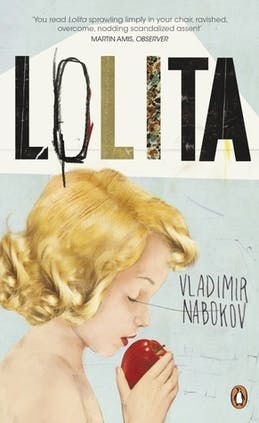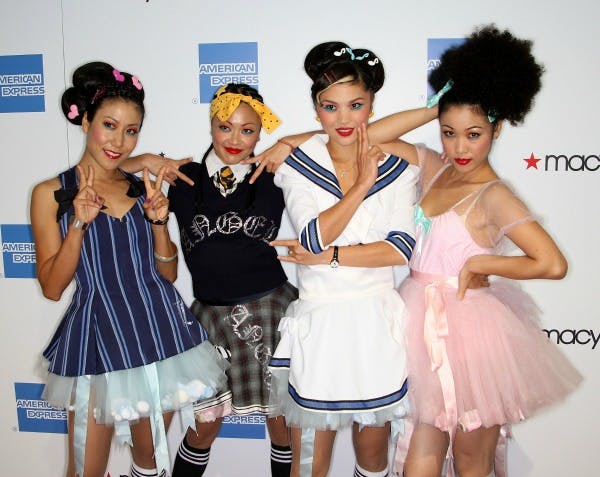In January of 1959, the 600 residents of Lolita, Texas, found themselves in the midst of an improbable identity crisis. The town had been named in 1909 for Lolita Reese, the granddaughter of a Texas patriot. But following the U.S. publication of Vladimir Nabokov’s novel in 1958, “Lolita” had suddenly acquired a whole new set of connotations.
“The people in this town are god-fearing, church going, and we resent the fact our town has been tied in with the title of a dirty, sex-filled book that tells the nasty story of a middle-aged man’s love affair with a very young girl.” So read a petition circulated by R. T. Walker, deacon of the local First Baptist Church, who hoped to change the town’s name from Lolita to Jackson. In the end, however, the proud citizens of Lolita decided to hunker down and wait out the storm: As the Texas historian Fred Tarpley put it, “Lolita was retained with the hope that the novel and the [upcoming] film would soon be forgotten."

In fairness to the good people of Lolita, nobody in 1959 could have predicted what the future had in store for Lolita. In the ensuing decades, Nabokov’s novel spawned two films, musical adaptations, ballets, stage adaptations (including one legendarily disastrous Edward Albee–directed production starring Donald Sutherland as Humbert Humbert), a Russian-language opera, spin-off novels, bizarre fashion subcultures, and memorabilia that runs the gamut from kitschy to creepy: from heart-shaped sunglasses to anatomically precise blow-up dolls. With the possible exception of Gatsby, no twentieth-century American literary character penetrated the public consciousness quite like Lolita. Her very name entered the language as a common noun: “a precociously seductive girl,” according to the Merriam-Webster dictionary. (Gatsby, by contrast, had to settle for a mere adjective: “Gatsbyesque.”) At a certain echelon of pop music megastardom (the domain of Britney, Miley, Katy Perry, Lana Del Rey) they are all Lolitas now, trafficking in the iconography of lollipops and stuffed animals and schoolgirl outfits. In the sixty years since she first appeared, Lolita transcended her original textual instance: She became an archetype, an icon of youthful desirability. Lolita became America’s sweetheart.
And yet, there is also a sense in which the citizens of Lolita, Texas, have been proved right. We have forgotten Lolita. At least, we’ve forgotten about the young girl, “standing four feet ten in one sock,” whose childhood deprivation and brutalization and torture subliminally animate the myth that launched a thousand music videos. The publication, reception, and cultural re-fashioning of Lolita over the past 60 years is the story of how a twelve-year-old rape victim named Dolores became a dominant archetype for seductive female sexuality in contemporary America: It is the story of how a girl became a noun.
Lolita was first published in Paris in 1955. Nabokov had apparently tried his luck with several big-name American publishing houses, but Lolita had the strong scent of jail-bait: At least one editor, Pascal Covici at Viking, believed that publication would land them both in prison. Thus, Nabokov’s masterpiece—a book included on Time Magazine’s list of the 100 greatest novels and ranked the fourth best novel of the century by the Modern Library—was first printed in the French publisher Olympia’s “Common Traveler” series alongside such literary achievements as Until She Screams, Tender Thighs, and There’s a Whip in My Valise.
Lolita, as most people know, is the first-person account of a 38-year-old man’s erotic obsession with a twelve-year-old girl. Humbert Humbert insists that he is not your garden-variety pedophile: He is attracted not to children, per se, but to “nymphets”—ethereal creatures distinguished by their “fey grace, the elusive, shifty, soul-shattering, insidious charm.” Humbert justifies his appetites by insisting that our apparently “natural” prohibition against sex with minors is in fact just a provisional and arbitrary cultural construction. “Dante fell madly in love with his Beatrice when she was nine,” he claims, and “when Petrarch fell madly in love with his Laureen, she was a fair-haired nymphet of twelve.” The name of Humbert’s first nymphic obsession, Annabel Leigh, evokes the poem “Annabel Lee” by Edgar Allen Poe, who married his 13-year-old cousin Virginia Clemm. “Lolita” recalls Lillita McMurray—who, heavily pregnant at 15, was rushed across the Mexican border to become Mrs. Charlie Chaplin. (Legend has it that Chaplin met her when she was seven-years old at Kitty’s Come on Inn, a meet-cute Nabokov himself could not have devised.)

Notwithstanding Humbert’s solipsistic claim that it was she who seduced him, Lolita spends much of the novel as the narrator’s sexual captive. Humbert’s description of the rape and coercion of his stepdaughter is generally glib and dismissive: How inconvenient for poor Humbert when Lolita suddenly expects to be paid for her “fancy embraces.” (He pries the coins out of her little fist after he’s finished.) In a few rare instances, however, Humbert allows the baroque veil of language to slip away, and we are momentarily reminded of Lolita’s youth and fragility, of “her sobs in the night—every night, every night—the moment I feigned sleep.”
Just as our revulsion toward him is starting to thicken and congeal, Humbert’s obsessive lust for Lolita effloresces into a shimmering halo of love. Humbert neither expects nor asks for our forgiveness—on the novel’s penultimate page, he says that he would sentence himself to 35 years in prison for rape—but the soaring tones in which he commemorates his love for Lolita have led some readers to wonder if he hasn’t achieved some kind of moral apotheosis after all. Is Humbert’s love genuine, and would it significantly change the novel’s moral calculus even if it were? One may violently disagree with Lionel Trilling—who suggested, in “The Last Lover,” that “we naturally incline to be lenient toward a rapist … who eventually feels a deathless devotion to his victim”—while still registering the deep pathos of Humbert’s final moments with Lolita. When they last part, Lolita is married, pregnant, “hopelessly worn at seventeen,” and no longer a nymphet. Humbert says, “I looked at her and looked at her, and knew as clearly as I know I am to die, that I loved her more than anything I had ever seen or imagined on earth, or hoped for anywhere else.”
From the start, the mere existence of Stanley Kubrick’s film adaptation of Lolita (1962) was presented as a reason for its existence. “How did they ever make a film of Lolita”? asked the film’s tag-line. Well, as at least one critic observed at the time, they didn’t. Kubrick’s sitcom adaptation of Lolita is a textbook case of what the culture critic Dwight MacDonald called “mid-cult”: the film sanitizes the novel, renders it safe for mass public consumption, and then congratulates its audience for having had an “artistic” experience. The film’s defenders point to the severe restrictions imposed by the Hays Code. But the problem with Kubrick’s Lolita is not the sexual subtext the filmmaker omitted. It’s the sexual subtext he added.
Nabokov repeatedly emphasizes that there is nothing conventionally beautiful about the nymphet. The novel’s Lolita is a tomboyish, malodorous little urchin: Humbert comments on her “monkeyish nimbleness”; he duly notes every time she picks her nose or adjusts a wedgie. Kubrick airbrushes this character into a 1950s pin-up model. In her introductory shot, Lolita is (un)dressed in a bikini, propped up on one arm, the posture and lighting carefully coordinated to accentuate the womanly swell of her hips, the smooth perfection of her long legs, her sultry expression as she looks up to meet our gaze. Of course, Nabokov’s Humbert is attracted to Lolita because of her childishness, not because she is a precocious bombshell. But the real issue is one of distance. The novel never lets us forget that there is something monstrous about Humbert’s desire for Lolita. Kubrick’s lens assumes that you are the monster—which would be fine, had he not also aged Lolita and endowed her with womanly allure, creating a safe imaginative space for our erotic consumption of her snowy young flesh.

In the end, Kubrick’s bowdlerization or egregious misprision of his source text didn’t much matter, because his film did something far more lasting: It gave the world an image of Lolita. The film’s poster—the hazy photograph of Lolita in her heart-shaped sunglasses, a glistening lollipop entering her moist lips—supplied America with the instantly recognizable signifiers of Lolita that would endure in the age of Instagram. That image, once seen, cannot be unseen. The merely textual Lolita has been lost to us forever.
A few years ago, GQ magazine created a minor controversy with a photo spread called “Glee Gone Wild.” The photos featured Glee cast members—Dianna Agron, Lea Michele, and the late Cory Monteith, who played members of a high school glee club—cavorting about a school in various states of undress. The photos elicited predictable outrage: Katie Couric denounced the shoot on CBS, calling it a betrayal of the show’s young viewership. The Parents Television Council (PTC) asserted that GQ “is sexualizing the actresses who play high school-aged characters on Glee. ... It borders on pedophilia.”

Of course, there was nothing explicitly pedophilic about the images, which featured actors who were 24 (Agron and Michele) and 28 (Monteith) years of age. What the PTC found disturbing about the images, even if they didn’t quite articulate it this way, was that they seemed to be tempting viewers to participate in a kind of imaginative pedophilia. We know that the actors are of age, which is exactly what allows us to indulge in the fantasy that they are under-aged. (A similar dynamic is at work in a Rolling Stone photo spread featuring a lingerie-clad Britney Spears posing with a teddy bear: Once again, an explicit recognition that the star is of consenting age licenses the viewer’s imaginative erotic enjoyment of her as a child.) It is precisely this invitation to imaginative pedophilia that has disturbed readers about Humbert Humbert. We know, after all, that Dolores Haze did not exist. No little girls were sexually violated in the making of Lolita. And yet there is something disquieting about Humbert’s insistence that you, dear reader, must collaborate with him in the rape of a child. “I want my learned readers to participate in the scene I am about to replay,” he says just prior to their first sexual encounter. And, later: “Imagine me; I shall not exist if you do not imagine me.”

“Glee Gone Wild” is an example of the “polite pedophilia” that fructifies in the American sexual imaginary. Historically, adult actors portrayed child roles in order to save children from the theater and its insalubrious associations. Today, popular culture rewards adult women who act like children for the collective erotic enjoyment that will not speak its name. The up-and-coming starlet Melanie Martinez pushes the aesthetic further than most: She poses with a soother, wears a bib, and drapes herself in a cloak made out of plushy toys. Katy Perry’s bodily proportions sometimes suggest a near-parodic vision of womanliness, but her childishness is the real secret to her success. “Got a motel and/ Built a fort out of sheets…” she sings in “Teenage Dream,” and then “Let’s go all the way tonight”—a song that appeals to very young girls and to dirty old men. Perry’s vestigial childishness, like the leering attention paid to Hannah Montana’s mutation or pupation into Miley Cyrus, reveals that nothing stokes the fire in our collective loins quite like the blurring of lines around childhood sexuality. (Miley’s outstretched tongue differs from the Rolling Stones’s icon in that it is a signifier not of fellatio, but of childishness: Sticking out their tongues is something little girls do.)
Indeed, the erotic fascination engendered by a young female star is only heightened if the audience has a clear image of what she looked like as a child (a nymphic echo, as Humbert might say), which surely contributes a certain erotic frisson to the “adult” success of so many former Disney stars: Christina, Britney, Miley, Selena Gomez, Demi Lovato. Any sufficiently talented, beautiful, and well-connected young girl can aspire to superstardom, but it sure helps if you used to appear in Barney and Friends. What is innocence, after all, if not the promise of future corruptibility?

Lolita occupies a curious cultural space in all of this. On the one hand, the endless cultural re-fashioning of Lolita over the past 60 years (from Stanley Kubrick to Lana Del Rey) has turned Lolita into the archetype of the alluring child, the very definition of a “precociously seductive girl.” On the other, the novel itself constitutes a vicious satire of a culture that fetishizes young girls—a culture that openly celebrates, in songs like “When You Were Sweet Sixteen,” “Sixteen Candles,” and “Sweet Little Sixteen,” the exact instant that a girl crosses the threshold into legal fuckability—while simultaneously loathing pedophilia as an absolute moral evil on par with genocide. Crucial to Nabokov’s satire is the fact that Humbert gets precisely what he wants: Some of the most spine-tingling moments in Lolita come from the casual manner in which Humbert reminds us that he is sleeping with his step-daughter:
I would have given her a sip of hot spiced wine, and two asprins, and kissed the fever away, if, upon an examination of her lovely uvula, one of the gems of her body, I had not seen that it was burning red. I undressed her. Her breath was bittersweet. Her brown rose tasted of blood. She was shaking from head to toe… Giving up all hope of intercourse, I wrapped her up in a laprobe and carried her into the car.
What Lolita names, today, is not simply a “precociously seductive girl,” but also the immense act of cultural repression that is partially accomplished by that dubious definition. Britney, Katy, and Miley may tap into the Lolita myth through the performance of precocity, but that precocity was never native to Dolores Haze; it was, in fact, projected onto her by her rapist. The widespread cultural acceptance of this fantasy at face value is tantamount to the declaration: #IBelieveHumbert. The American public imagination has accepted Humbert’s definition of the nymphet while strenuously muffling the pedophilic exertions involved in the creation of the myth.
But while the erasure of Humbert may be necessary to sustain the fantasy, Nabokov was in the business of puncturing fantasies, not perpetuating them, and nothing kills a fantasy faster than its fulfillment. Sixty years on, celebrity culture everywhere confirms that Lolita is still the most thrilling ride in the amusement park, though her creator wanted us to hear the sobs in the night—every night, every night—that were the price of admission.
